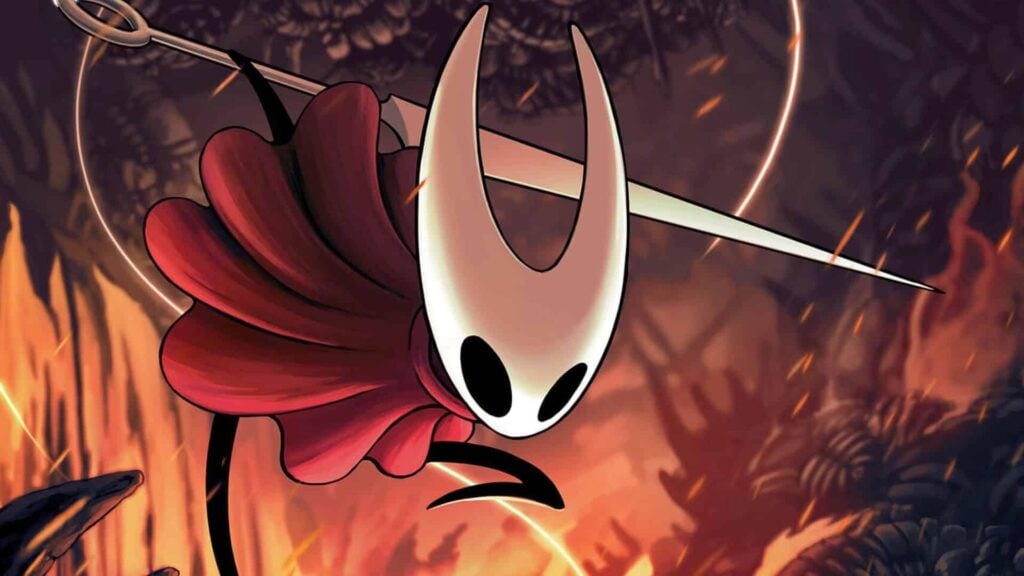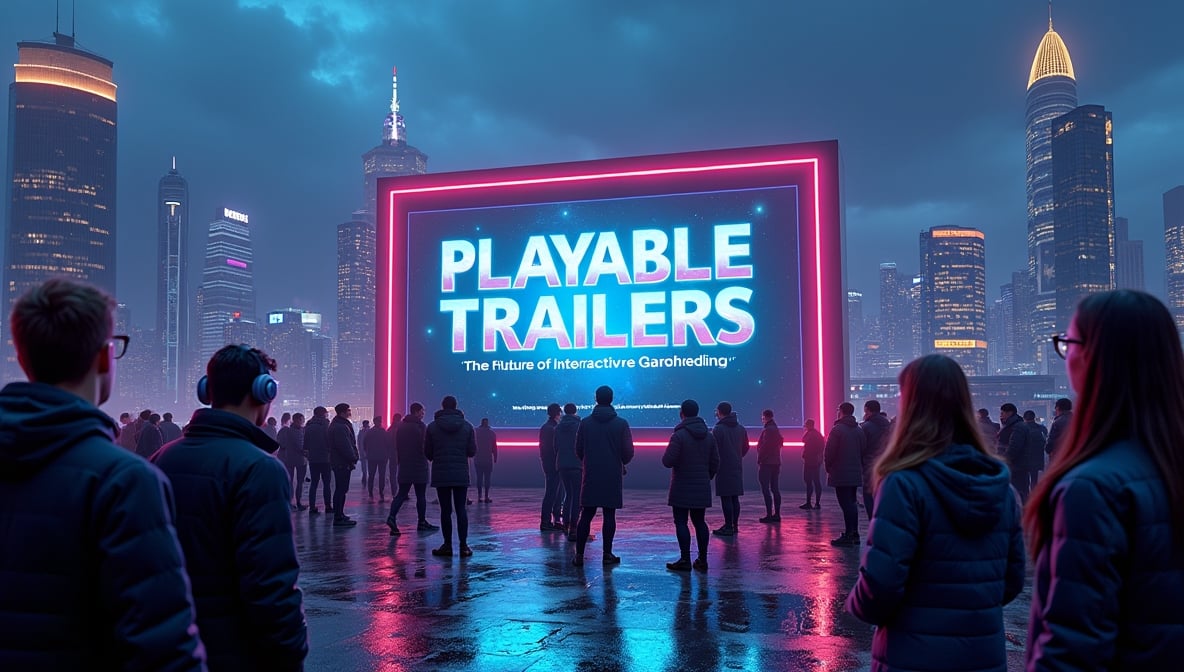1. Introduction — When the Trailer Says Press Start
The first time I hit “Play” on the Death Stranding 2 teaser in early 2025, I expected a cinematic glimpse, maybe a moody voiceover from Kojima’s crew. Instead, a prompt appeared: Move forward with the left stick. My eyebrows went up before I even realized I was suddenly part of the scene.
What exactly is a playable trailer? It’s a bite‑sized, limited, but fully interactive snippet of a game offered as part of its marketing campaign — a trailer that literally puts you in the driver’s seat before the game hits shelves.

Playable Trailers 2025, Interactive Game Marketing, Game Demo Hype
Leaving behind the era when trailers were entirely passive, we’re now in a space where curiosity and control merge. Gamers no longer just watch; they play their way into the marketing machine. That shift changes how hype is built, sustained, and acted upon.
2. Beyond the Static Demo
Traditional demos tend to drop months before release, often pulling from mid‑game content to give players a chunky preview. Playable trailers flip that idea — they’re brief, hyper‑polished, and laser‑focused on creating intrigue.
How do playable trailers differ from traditional game demos? They’re usually lighter to download, often under 3GB thanks to asset streaming, and tightly scripted to leave you with questions. Instead of satisfying curiosity entirely, they hand you just enough rope to keep pulling.
3. 2025: Why This Trend is Blowing Up
Cloud streaming and improved engine compression have made instant‑on gameplay from a storefront page or a browser plausible for mass audiences. No more “go make coffee while it downloads” — now a single click can load an interactive experience within seconds.
Why are we seeing more playable trailers in 2025? Because the barriers are gone. Publishers see higher conversion when the gap between “I’m interested” and “I’m playing” shrinks to under a minute. And with cloud platforms like NVIDIA GeForce NOW integrating experimental promo tech, it’s never been easier.

4. Measurable Marketing Impact
Analytics dashboards now track how long players stay in a teaser, which moments they record, even what collectibles they find. That data links directly to wishlist spikes on Steam or console storefronts.
5. Building Game Demo Hype
One trick marketers have learned: drop the playable trailer right after a major event reveal. At The Game Awards 2024, several big studios pushed “Play Now” buttons live on‑air — social media lit up instantly.
How is the “game demo hype” built around them? It’s about tight timing, influencer early access, and implanting “did you see that moment?” hooks. Developers intentionally include one striking mechanic or set‑piece in the trailer to make it GIF‑friendly and shareable.
6. Case Studies — The Big Players
1. Death Stranding 2 Interactive Teaser — Letting you walk a small, storm‑swept stretch of coastline while hearing cryptic dialogue, ending abruptly at a monolithic door you couldn’t open.
2. Assassin’s Creed Shadows Browser Demo — A condensed stealth mission playable directly via Chrome or Edge, with rewards linked to Ubisoft Connect.
3. Resident Evil 4 VR Mode Promo — A playable training room where you could handle weapons before the full VR update released.
Which big titles have used playable trailers successfully? The examples above show that when done well, they can be as conversation‑driving as the core game itself.
It isn’t just AAA juggernauts making noise. While big budgets help frame the spectacle, indie developers have found their own clever twists.

7. Indie Experiments
On Steam, Dredge’s fishing‑only pre‑launch teaser had players sharing eerie ocean screenshots months before release. Unpacking offered a web‑embedded “single box” trailer — you placed items in just one cozy bedroom, but it was enough to convey the magic.
Are indie games using them too, or is it just a AAA tactic? Indies love them. When budgets are tight, a small contained teaser can act both as marketing buzz and a proof‑of‑concept for late‑stage funding rounds.
8. The Spoiler Problem
Giving players even 10 minutes of the wrong content can wreck the magic. A stealth game that hands over its flashiest gadget in the teaser might leave nothing fresh for that moment in the full game.
Do they ever spoil too much of the actual game? Yes — and the backlash can be harsh.

9. Risk and Reward
Playable trailers have an Achilles’ heel: first impressions are inescapable. A sluggish framerate or clunky controls in an unfinished build can sour early adopters before launch day.
Can a bad playable trailer hurt a game’s launch? Absolutely. When Cyberpunk 2077’s 2020 preview build ran poorly on certain consoles, early skepticism stuck even after patches — proving this danger existed long before the formal “playable trailer” boom.
10. Looking Ahead — Ads as Playgrounds
In the not‑so‑distant future, you might discover a playable slice while scrolling TikTok or inside a livestream’s ad break. Cloud technology could make “try now” experiences indistinguishable from watching the promo itself.
Are playable trailers the future of interactive game marketing? They’ll be a major part — not every game will use them, but for titles that rely on immersion and mechanics as selling points, handing over control beats any cutscene.
11. Conclusion — The Curtain Rises, Controller in Hand
From AAA spectacles to indie charmers, the playable trailers 2025 wave is proving that the shortest path to a gamer’s heart (and wallet) is through their hands. For developers, it’s a high‑wire act between intrigue and overexposure. For players, it’s a chance to skip the waiting room and step right into the world mid‑reveal.
Whether we’re talking a 90‑second browser mission or a hidden Xbox Store teaser, these are more than ads — they’re invitations. And the next time a trailer suddenly says Press Start, don’t be surprised if it’s the most memorable 10 minutes you spend all month.
FAQs
Q1: Can playable trailers be updated after release to reflect game changes?
Yes, some studios patch them post‑launch to tweak balance, fix bugs, or add new teaser segments as part of rolling campaigns.
Q2: How long should an ideal playable trailer last?
Industry consensus leans toward 5–12 minutes — long enough to hook, short enough to avoid fatigue or content bloat.
Q3: Do playable trailers work well for competitive multiplayer titles?
They can, especially if they focus on tutorial‑style challenges rather than full matches, helping players grasp mechanics quickly.
Q4: How do platform holders view playable trailers in their storefronts?
Positively — they drive user engagement metrics, which benefit both the developers and the digital store ecosystems hosting them.


